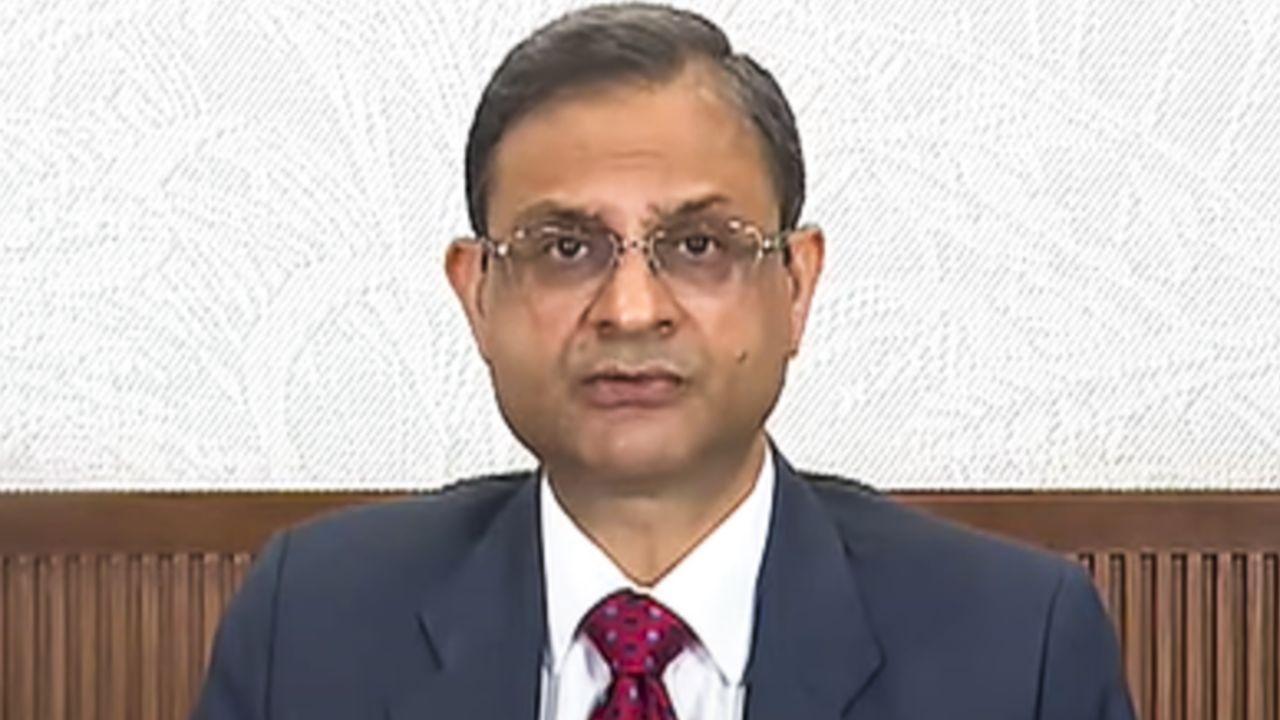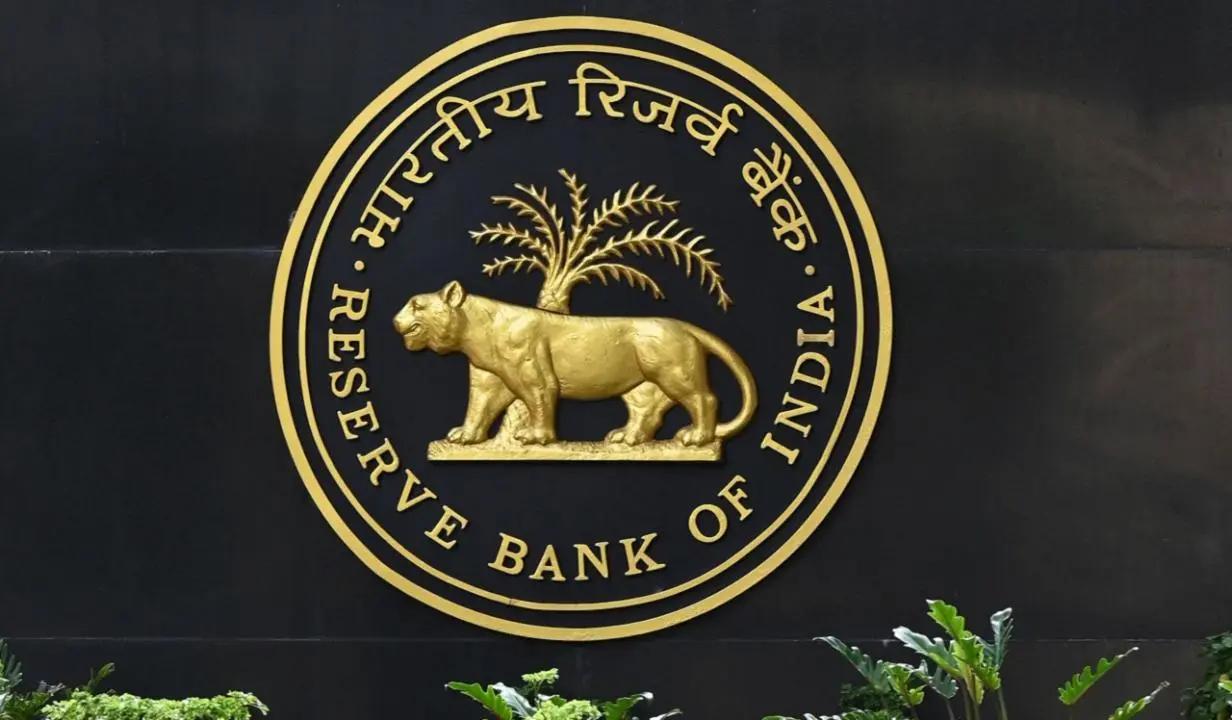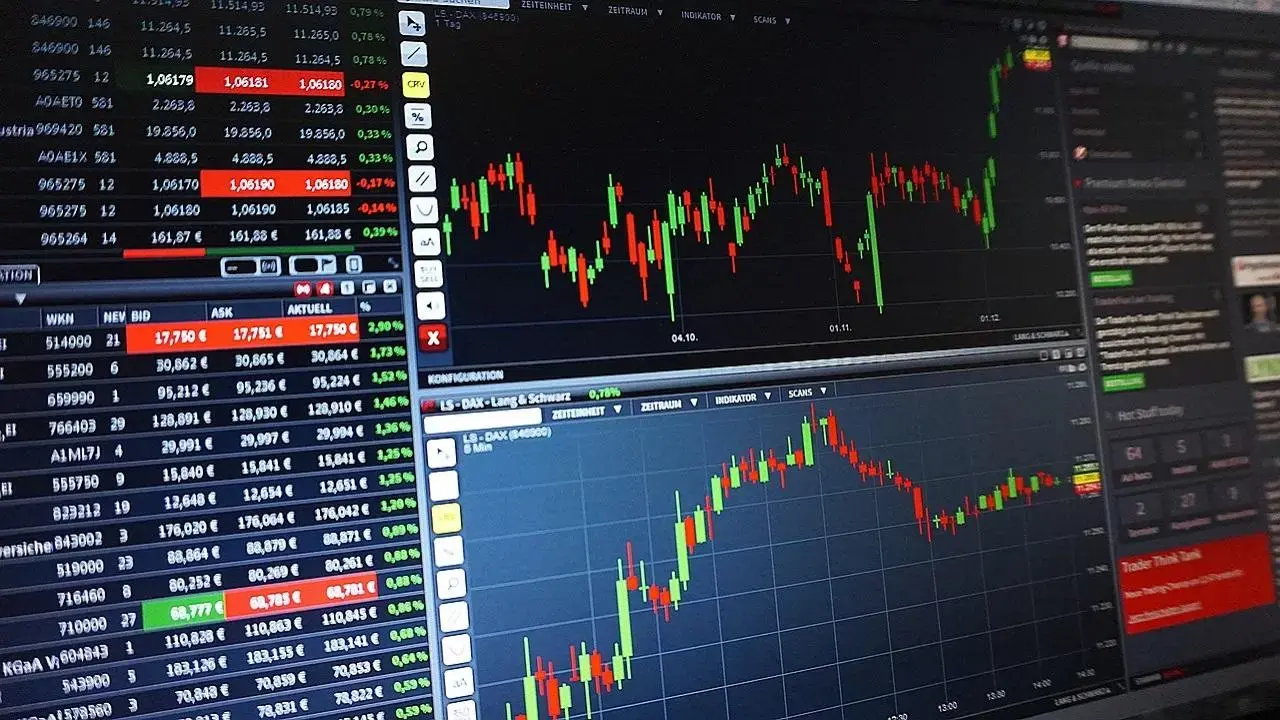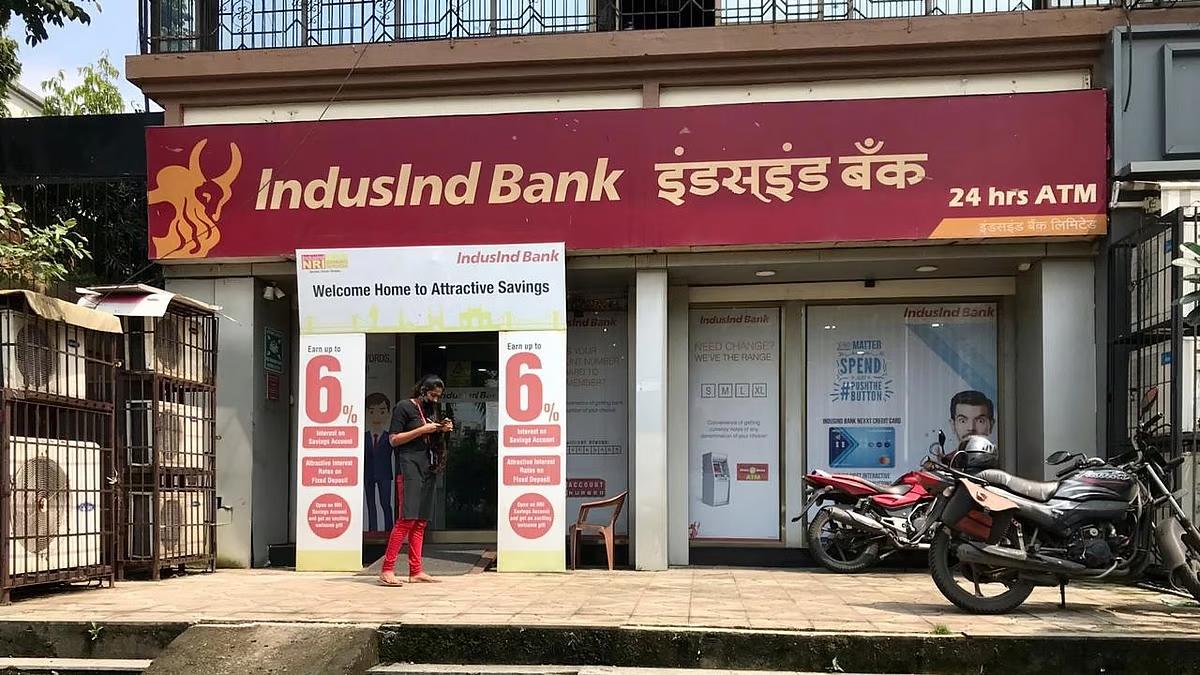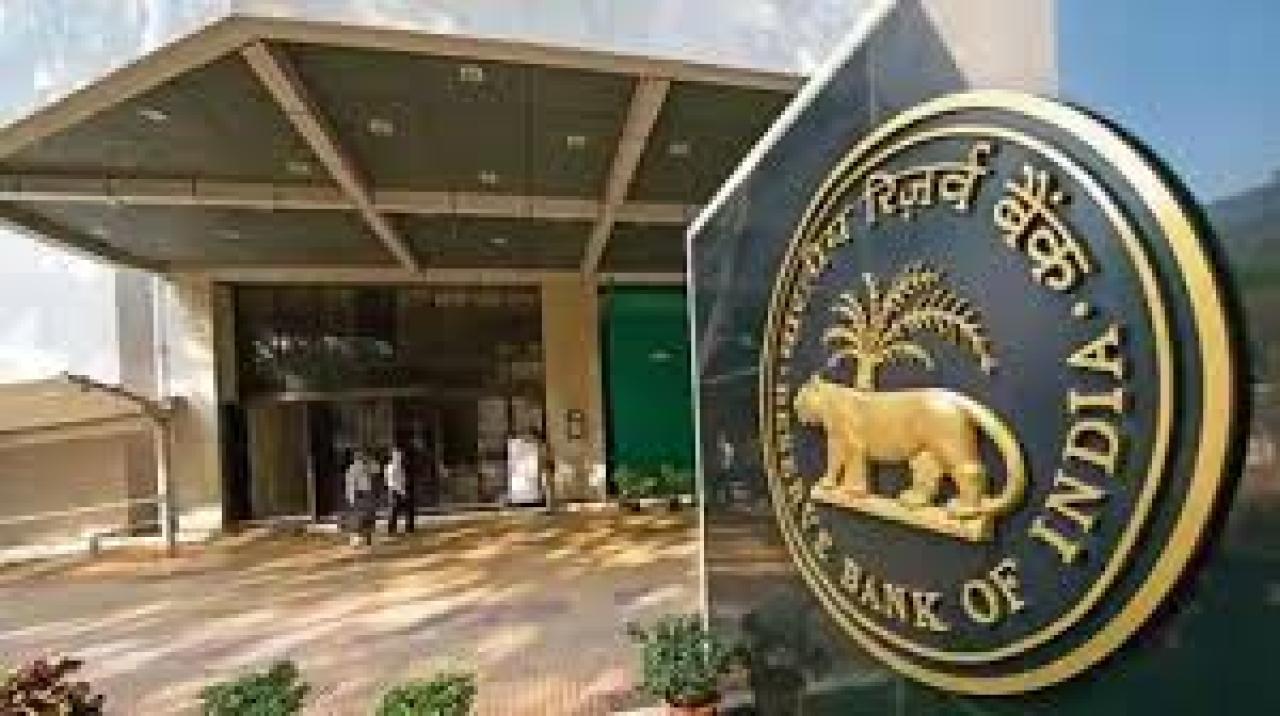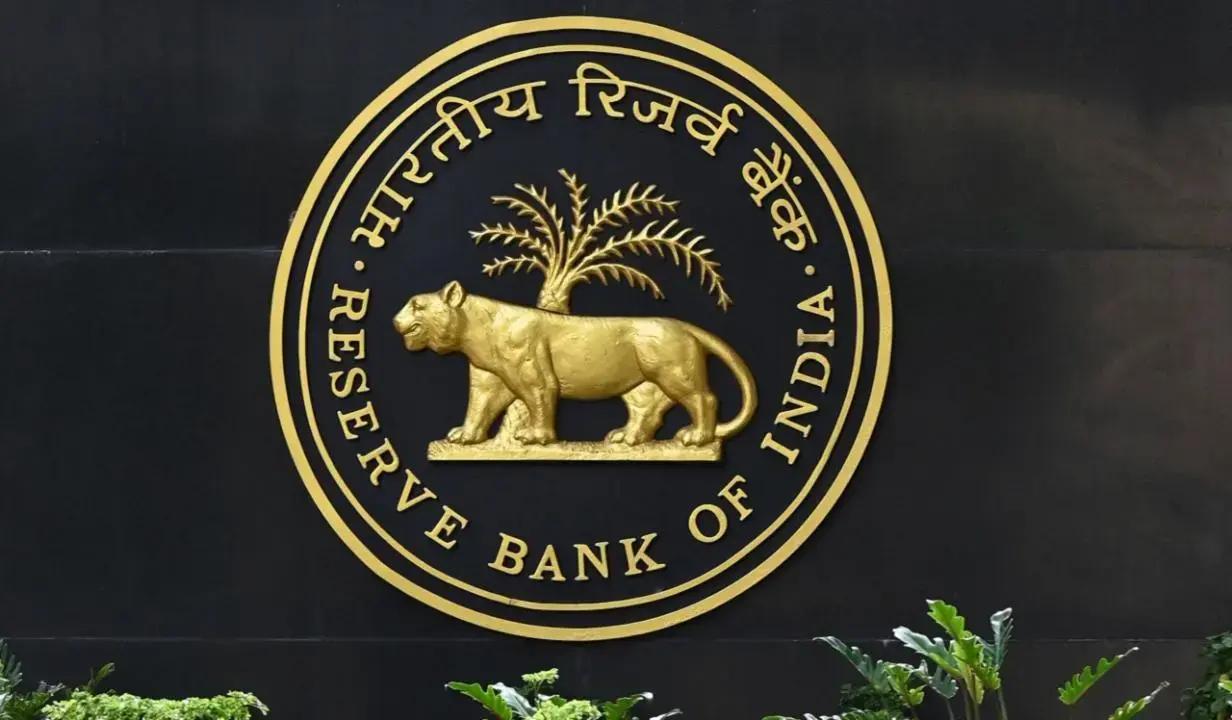Read Business News
Stock market today: Indices open flat amid weak global cues and tariff concerns
Indian equity benchmarks opened on a cautious note on Wednesday, reflecting tepid global cues and uncertainty surrounding tariff developments in the United States. As per ANI, the broader sentiment remained restrained, despite recent gains, owing to fresh concerns regarding potential trade barriers. At the start of trade, the BSE Sensex was down by 119.60 points, or 0.16 per cent, settling at 76,615.29. Simultaneously, the NSE Nifty slipped by 36.35 points or 0.16 per cent to open at 23,292.20. According to ANI, among the major gainers in early trade were Shriram Finance, IndusInd Bank, Apollo Hospitals, Kotak Mahindra Bank and Axis Bank. On the other hand, key laggards included Infosys, Maruti Suzuki, Tech Mahindra, Tata Consumer Products, and Cipla. Akshay Chinchalkar, Head of Research at Axis Securities, noted that Tuesday's trading session formed a ‘hanging man’ candlestick pattern on the charts, a potential indicator of slowing momentum. “Immediate support lies at 23,207, while resistance is expected in the 23,400–23,500 zone. Bulls must protect the crucial 22,924 level to keep the rally alive towards the recent swing high of 23,870,” he stated. As per ANI reports, Ajay Bagga, a market and banking analyst, highlighted that Indian markets currently remain around 12 per cent below their all-time highs recorded in late September. Broader indices have experienced deeper corrections. “There was a noteworthy uptick in foreign portfolio investments (FPIs) in the cash segment recently, which has lifted all indices. The domestic currency has also shown signs of strengthening,” Bagga said. He further added that sustained buying interest from FPIs, coupled with healthy domestic investor participation, could act as a catalyst for a renewed surge in Indian equities. The upcoming earnings season and further guidance on global trade will also be closely monitored by investors. According to ANI, Bagga pointed out that recent comments from US officials suggest that the 20 per cent 'reciprocal' tariffs, previously lowered to 10 per cent under the Trump administration are unlikely to be completely rolled back. These tariffs, especially those on automobiles and metals, continue to loom over global trade prospects. Market experts are closely watching developments between the US and China, particularly following the US Commerce Department’s decision to launch an investigation into pharmaceutical and semiconductor imports. This move could potentially result in additional tariffs, which would weigh on global sentiment. (With inputs from ANI)
17 April,2025 11:10 AM IST | Mumbai | mid-day online correspondentAffordable housing stock drops 19 per cent in Q1, luxury stock up 24 per cent
The Indian real estate market has shown mixed trends as affordable housing stock has witnessed a significant decline, while luxury housing has experienced a notable increase in unsold inventory, as per the latest research by ANAROCK. The unsold stock in the affordable housing segment, priced below Rs 40 lakh, has fallen by 19 per cent year-on-year, from around 1.40 lakh units by the end of Q1 2024 to approximately 1.13 lakh units by the end of Q1 2025. In contrast, the luxury housing market, which typically caters to homes priced above Rs 1.5 crore, has seen a 24 per cent rise in unsold units. From 91,125 unsold units at the end of Q1 2024, the number has surged to over 1.13 lakh units by Q1 2025, highlighting a significant uptick in supply despite a cautious investor sentiment and global economic uncertainties. City-wise performance The shift in demand across cities paints a varied picture. Among the major cities, Bengaluru led the decline in affordable housing stock, seeing the steepest drop of 51 per cent. Chennai followed with a 44 per cent decrease, while Hyderabad was the only city to register an increase in affordable housing stock, with a 9 per cent rise. The surge in Hyderabad’s affordable stock saw it climb to approximately 1,815 unsold units by Q1 2025, in stark contrast to the declines seen in other cities. In terms of the luxury housing market, Chennai and Pune were the only cities to see a decrease in unsold stock. Chennai experienced a 4 per cent drop in its luxury housing inventory, while Pune saw an 11 per cent decline. On the other hand, the remaining five cities - NCR (National Capital Region), MMR (Mumbai Metropolitan Region), Kolkata, Hyderabad, and Bengaluru - saw an increase in their unsold luxury housing stock, reflecting the growing supply in this segment. Affordable housing The affordable housing segment, which had been severely impacted by the pandemic, has seen a steady decline in unsold stock over the past year. According to ANAROCK data, the total unsold inventory in affordable housing across the top seven cities has reduced from 1.40 lakh units at the end of Q1 2024 to 1.13 lakh units at the end of Q1 2025. The reduction of 19 per cent in unsold units signals that there is sustained demand from end-users, even as the supply in this category remains restricted. Bengaluru has shown the most remarkable recovery in the affordable housing category, with a sharp 51 per cent annual decline in unsold stock. Chennai followed closely, registering a 44 per cent reduction. Hyderabad bucked the trend with a modest 9 per cent increase, suggesting a growing appetite for affordable housing in this market. Luxury housing On the other hand, the luxury housing segment saw a surge in unsold inventory over the same period, rising by 24 per cent. From approximately 91,125 unsold units at the end of Q1 2024, the unsold stock of luxury housing increased to over 1.13 lakh units by Q1 2025. This increase is largely attributed to the substantial addition of new supply in the market, even as demand from investors and high-net-worth individuals (HNIs) remains cautious due to global economic uncertainty. Cities such as NCR saw a substantial 78 per cent increase in unsold luxury housing stock, while Bengaluru also experienced a significant 57 per cent rise in luxury unsold units. Kolkata witnessed the most dramatic growth in luxury housing, with a 96 per cent increase in unsold stock. Despite this, Chennai and Pune experienced a decline in luxury stock, with reductions of 4 per cent and 11 per cent, respectively, as demand for this segment remained relatively tepid. Mid and premium housing segments The mid-segment housing (priced Rs 40-80 lakh) also showed a decline in unsold stock, down by 10 per cent from approximately 1.75 lakh units at the end of Q1 2024 to around 1.58 lakh units by Q1 2025. Meanwhile, the premium segment (priced INR 80 lakh to INR 1.5 crore) saw its unsold stock remain largely unchanged during the same period, indicating stable demand in this category despite a slight dip in supply. Market outlook The overall unsold stock across all budget categories in the top seven cities declined by just 4 per cent during the period, from 5.81 lakh units at the end of Q1 2024 to 5.60 lakh units by the end of Q1 2025. This indicates a mixed recovery, with some segments (affordable housing) seeing improvements, while others (luxury housing) are dealing with an increase in unsold inventory. Anuj Puri, Chairman of ANAROCK Group, pointed out that the affordable housing segment bore the brunt of the pandemic's fallout. Sales and new launches were severely impacted, with the share of affordable housing sales dropping from 38 per cent in 2019 to just 18% in 2024. Similarly, the supply share for affordable housing fell from 40 per cent to 16 per cent in the same period. However, Puri noted that the 19 per cent decline in unsold stock suggests that demand is holding steady, driven largely by end-users. In contrast, the luxury housing segment experienced a sharp rise in unsold stock despite robust demand in previous years. Puri attributed this to an increase in new supply and more cautious investor sentiment amid global uncertainties.
14 April,2025 01:39 PM IST | Mumbai | mid-day online correspondentRBI announces six key measures to strengthen India's banking, fintech, payments
To strengthen India's financial ecosystem, the Governor of the Reserve Bank of India (RBI), Sanjay Malhotra, announced six additional measures focused on banking regulations, fintech and payment systems on Wednesday. These initiatives were revealed by the RBI governor while announcing the Monetary Policy initiatives. This will complement the existing Asset Reconstruction Company (ARC) route under the SARFAESI Act, 2002, and aim to deepen the secondary market for distressed loans. Currently, co-lending arrangements are restricted to only priority sector loans by banks and Non-Banking Financial Companies (NBFCs), but they will now be extended to all regulated entities for all loans, priority sector or otherwise. According to ANI, the RBI will issue comprehensive prudential and conduct regulations for gold loans to ensure consistency across regulated entities and account for their varying risk-bearing capacities. The central bank also plans to harmonise the regulations governing non-fund-based credit facilities, such as bank guarantees and letters of credit, across financial institutions. Additionally, the RBI intends to revise guidelines on partial credit enhancement (PCE), a step aimed at expanding funding avenues for infrastructure projects. Draft guidelines for the above four proposals are released for public consultation, with final frameworks to be issued following stakeholder feedback. The fifth announcement is that the National Payments Corporation of India (NPCI) will be empowered to set transaction limits for Unified Payments Interface (UPI) person-to-merchant transactions in consultation with banks and relevant stakeholders, which will benefit higher-value digital payments in the retail ecosystem, as per ANI. To promote continuous innovation, the RBI will make its Regulatory Sandbox framework theme-neutral and 'on tap'. This will enable FinTech and other entities to apply at any time without waiting for themed cohorts, encouraging more agile experimentation and faster adoption of emerging technologies. The RBI Governor stated, "The other two announcements relate to enabling NPCI to decide, in consultation with the banks and other stakeholders, the transaction limits in UPI for person to merchant transactions; and making the Regulatory Sandbox theme-neutral and 'on-tap. ' Necessary directions for the implementation of these two measures shall be issued separately," reported ANI. (With inputs from ANI)
09 April,2025 01:16 PM IST | Mumbai | mid-day online correspondentRBI cuts repo rate to 6 per cent to support growth amid global uncertainties
The Reserve Bank of India (RBI) has cut the benchmark repo rate by 25 basis points, bringing it down from 6.25 per cent to 6 per cent. The announcement was made following a three-day meeting of the Monetary Policy Committee (MPC) that concluded on 9 April. As per ANI, this is the second consecutive rate reduction this year, following a similar 25-bps cut in February. RBI Governor Sanjay Malhotra stated that the decision was unanimous and aimed at supporting economic revival amid global headwinds. “After a detailed assessment of the evolving macroeconomic and financial conditions and outlook, the MPC voted unanimously to reduce the policy repo rate by 25 basis points to 6 per cent with immediate effect,” said Malhotra. The Governor highlighted the volatile global economic environment, noting that trade tariffs and geopolitical uncertainties have intensified pressures on inflation and growth across regions. “The global economic outlook is fast changing. Recent trade tariff-related measures have exacerbated uncertainties, clouding the economic outlook across regions, posing new headwinds for global growth and inflation. Amidst this turbulence, the US dollar has weakened appreciably,” he observed. Domestically, Malhotra mentioned that while growth in India is recovering after a sluggish first half of FY 2024–25, it remains below desirable levels. “Growth is improving, although it still remains lower than what we aspire for,” he added. In line with the repo rate revision, the RBI also adjusted the key rates under the Liquidity Adjustment Facility (LAF). As per ANI reports, the Standing Deposit Facility (SDF) rate now stands at 5.75 per cent, while both the Marginal Standing Facility (MSF) rate and the Bank Rate have been revised to 6.25 per cent. On the inflation front, the central bank painted a more positive picture. The MPC acknowledged a notable dip in food inflation and projected a durable alignment of headline inflation with the 4 per cent target over the next year. “There is now greater confidence of a durable alignment of headline inflation with the target,” Malhotra noted. In reaction to the announcement, Anuj Puri, Chairman of ANAROCK Group, said the move was broadly anticipated due to moderating inflation levels. However, he cautioned that home loan borrowers may not see immediate relief unless banks choose to pass on the benefit of these cuts. “Many banks have not transmitted earlier MPC rate cuts to borrowers due to higher funding costs, net interest margin pressures, and cautious lending sentiment,” he stated. According to ANAROCK Research, housing prices have continued to rise, with Q1 2025 witnessing a year-on-year average increase of 17 per cent across the top seven cities. NCR and Bengaluru saw the steepest rises at 34 per cent and 20 per cent, respectively. Puri added that if lenders do pass on the benefit, it could significantly encourage first-time homebuyers, especially in the affordable housing segment. He advised existing borrowers to negotiate lower rates or consider transferring their home loans but warned that relief could be partial at best. “Any EMI reduction should ideally be used for prepayment or investment, rather than increased consumption,” he advised. (With inputs from ANI)
09 April,2025 11:13 AM IST | Mumbai | mid-day online correspondentStock markets remain shut for Holi, trading to resume on March 17
Indian equity markets remained closed on Friday, March 14, in observance of Holi 2025, the festival of colours, which is celebrated across the country, reported ANI. The holiday marks the arrival of spring and has resulted in a pause in trading activities on the domestic stock exchanges. ANI reported that the National Stock Exchange (NSE) and the Bombay Stock Exchange (BSE) announced the closure of all market segments, including derivatives, securities lending and borrowing (SLB), equity, currency trading, and electronic gold receipts (EGR). The Holi 2025 holiday has shortened the trading week, giving market participants additional time to strategise their next moves when trading resumes on Monday, March 17. On Thursday, the Indian stock markets closed on a negative note. ANI reported that NSE Nifty ended at 22,397.20, down by 73.30 points or 0.33 per cent. Similarly, the BSE Sensex followed the downward trend and closed at 73,828.91, falling over 200 points or 0.27 per cent. According to ANI, the major gainers at the NSE on Thursday included Bharat Electronics, SBI, ICICI Bank, Cipla, and NTPC. On the other hand, the biggest losers were Shriram Finance, Tata Motors, Hero MotoCorp, IndusInd Bank, and Hindalco Industries. On the BSE, both the Midcap and Smallcap indices declined by 0.5 per cent each. Sector-wise, auto, IT, metal, media, and realty stocks traded in the red, recording losses between 0.5 to 1 per cent. However, the PSU Bank index saw a modest rise of 0.5 per cent. Market sentiment throughout the week remained mixed as investors responded to both global and domestic economic signals. ANI reports that US inflation data (CPI) came in lower than expected, providing some support to the US stock markets, which had been down by three per cent earlier. This small recovery in US markets had a positive influence on some developing markets as well. On the domestic front, Indian inflation eased due to a decline in food prices. Additionally, the Index of Industrial Production (IIP) exceeded market expectations, reflecting stronger industrial performance. Market analysts believe that as trading resumes next week, investors will closely watch global market developments and domestic economic indicators to assess the future direction of the market. The holiday break is expected to give traders time to recalibrate their strategies based on these factors. (With inputs from ANI)
14 March,2025 11:04 AM IST | Mumbai | mid-day online correspondentIndusInd Bank stock falls 23 percent to 52-week low on derivatives discrepancies
IndusInd Bank shares plunged by 23% in early trade on Tuesday, hitting a 52-week low, following the private lender's disclosure of discrepancies in its derivatives portfolio. The stock extended its losing streak for the fifth consecutive session, becoming the biggest drag on the Sensex. On the BSE, IndusInd Bank’s stock tanked 22.8%, reaching the lower circuit at ₹695.25 per share, marking its lowest level in the past year. Similarly, the stock plummeted by 21.67% on the National Stock Exchange (NSE), touching a 52-week low of ₹705.35 apiece. According to PTI reports, the sharp decline made IndusInd Bank the worst-performing stock among the 30 constituents of the BSE Sensex. The broader market was also under pressure, with the Sensex falling 255 points, or 0.34%, to 73,860.17. Meanwhile, the NSE Nifty dropped 47.65 points, or 0.21%, to 22,412.65 in early trade. The steep sell-off followed the bank’s regulatory filing on Monday, where IndusInd Bank reported that an internal review had uncovered certain discrepancies in the account balances of its derivatives portfolio. The Mumbai-based lender stated that the review was conducted in line with the Reserve Bank of India’s (RBI) directives issued in September 2023 regarding the investment portfolios of banks, specifically concerning ‘Other Asset and Other Liability’ accounts. According to the bank’s statement, the internal assessment revealed that the adverse impact of the discrepancies could be around 2.35% of the bank's net worth as of December 2024. This translates to an estimated hit of approximately ₹1,500 crore, according to market experts. Following the disclosure, IndusInd Bank held an analyst call to address concerns. The bank confirmed that an external auditor has been engaged to conduct an independent review of the matter, with the report expected to be finalised by the end of March 2024. Despite the negative development, IndusInd Bank sought to reassure investors by stating that the bank's overall profitability and capital adequacy remain healthy enough to absorb the one-time impact from the discrepancies. The stock had already faced pressure on Monday, closing nearly 4% lower after the RBI’s decision to extend the tenure of the incumbent CEO by only one year. The bank had reportedly sought a three-year extension. Market analysts believe that the combination of governance concerns, the RBI’s cautious approach on leadership tenure, and the uncertainty around the derivatives portfolio have contributed to the sharp fall in IndusInd Bank’s stock. "The discovery of discrepancies in the derivatives portfolio raises concerns about the bank's internal controls and could impact investor confidence in the short term," said a financial expert quoted by PTI. As per PTI reports, the steep fall in IndusInd Bank's stock reflects broader market nervousness, with investors remaining cautious about the potential financial and reputational fallout from the derivatives issue. The coming weeks are expected to be critical as the external auditor's report could provide further clarity on the extent of the problem and its long-term impact on the bank's financial health. IndusInd Bank’s management has assured investors that corrective measures are already being implemented to prevent such discrepancies from occurring in the future. However, market sentiment is likely to remain fragile until the final audit report is released. (With inputs from PTI)
11 March,2025 01:24 PM IST | MumbaiMarkets rebound after five-day slump as Sensex and Nifty recover
After a prolonged downturn lasting five consecutive sessions, equity benchmark indices Sensex and Nifty witnessed a rebound in early trade on Tuesday, buoyed by value buying at lower levels. The 30-share BSE Sensex climbed 117.57 points to reach 74,571.98 in initial trade, while the NSE Nifty advanced by 31.3 points to 22,584.65. As trading progressed, the Sensex further surged 272.39 points, reaching 74,725.89, and the Nifty moved up by 47.45 points to 22,600.80. Among the top gainers in the Sensex pack were Mahindra & Mahindra, Zomato, Adani Ports, Bajaj Finserv, Bajaj Finance, and Bharti Airtel. Conversely, Power Grid, Larsen & Toubro, Sun Pharma, and NTPC were among the laggards. Over the past five trading sessions, the BSE benchmark had suffered a decline of 1,542.45 points, or 2 per cent, while the Nifty dropped by 406.15 points, or 1.76 per cent, as per PTI reports. According to V K Vijayakumar, Chief Investment Strategist at Geojit Financial Services, "The market is currently oversold, large-cap valuations are reasonable, and short positions are substantial. This scenario sets the stage for a potential rebound, particularly if short-covering takes place. However, the core concern remains the unrelenting selling pressure from foreign institutional investors (FIIs) in the cash market." He further stated that domestic institutional investors (DIIs) have played a crucial role in preventing a deeper downturn, despite sustained FII selling. "The uncertainty surrounding Trump tariffs will continue to weigh on global markets," he added. Exchange data reveals that FIIs offloaded equities worth Rs 6,286.70 crore on Monday, while DIIs absorbed Rs 5,185.65 crore in domestic equities, mitigating some of the downward pressure. Prashanth Tapse, Senior Vice President (Research) at Mehta Equities Ltd, expressed concerns over the magnitude of FII selling. "With FIIs having sold over Rs 6,000 crore worth of Indian equities on Monday alone and offloading more than Rs 1 lakh crore since the beginning of this year, there is growing apprehension about how long domestic inflows can continue to offset overseas investor exits," he stated. In the broader Asian markets, indices in Seoul, Tokyo, Shanghai, and Hong Kong were trading lower, following weak global cues. Meanwhile, US markets closed mostly in negative territory on Monday. On the commodities front, the global oil benchmark Brent crude registered a 0.51 per cent rise, trading at USD 75.16 per barrel, as per PTI reports. Monday’s session saw the Sensex plummeting by 856.65 points, or 1.14 per cent, to close at 74,454.41, while the Nifty recorded a steep decline of 242.55 points, or 1.06 per cent, to settle at 22,553.35, highlighting the volatility in the markets over the past week. (With inputs from PTI)
25 February,2025 11:00 AM IST | MumbaiIndia can certainly achieve over 7 percent growth, says RBI Governor Malhotra
Reserve Bank of India (RBI) Governor Sanjay Malhotra expressed confidence in India's economic potential, stating that the country can certainly achieve a growth rate of over 7 per cent. Speaking at the post-Monetary Policy Committee (MPC) press conference on Friday, Malhotra emphasised that this should be the target India aspires to. "These are difficult questions to answer, but nevertheless, I would like to stick my neck out and say that certainly India can achieve a 7 per cent plus growth rate, and we should certainly aspire for it," the RBI Governor said when asked about the feasibility of attaining such a growth rate. According to ANI, the government’s Economic Survey has projected India's growth rate for the upcoming fiscal year 2025-26 to be in the range of 6.3 to 6.8 per cent. Meanwhile, the RBI has forecasted a growth rate of 6.7 per cent for the same period. When questioned about the balance between growth and inflation, Malhotra stated that managing inflation and ensuring price stability remain the primary objectives for India, while also keeping economic growth in view. "So we will continuously focus on that, trying to meet these objectives. We will try to align the inflation with the target that has been given to us," he said, as per ANI reports. The Governor further noted that the time had come for the RBI to adopt a more supportive stance towards economic growth, given that inflation is showing signs of moderation. "Inflation is expected to decline further, and we will maintain a neutral stance so that we can proactively respond to evolving macroeconomic conditions," Malhotra stated. In response to a query on whether the RBI aims to maintain inflation within the 2-6 per cent band or at the ideal 4 per cent mark, Malhotra remarked, "In RBI, we like to be on top of everything," suggesting that the central bank is working towards aligning inflation with the 4 per cent target. On the inflation outlook, the central bank anticipates Consumer Price Index (CPI) inflation to ease to 4.8 per cent in 2024-25, with Q4 inflation projected at 4.4 per cent. Looking ahead to 2025-26, inflation is forecasted to be at 4.2 per cent, with quarterly estimates of Q1 at 4.5 per cent, Q2 at 4.0 per cent, Q3 at 3.8 per cent, and Q4 at 4.2 per cent. As per ANI, announcing key takeaways from the recent RBI MPC decisions, Malhotra pointed out that inflation has declined, supported by a favourable outlook on food prices and the continued impact of previous monetary policy measures. He further stated that inflation is expected to moderate further in 2025-26, aligning gradually with the RBI’s target. Malhotra also highlighted that food inflation pressures are expected to ease significantly, thanks to a promising rabi crop, which would contribute to a stable inflation outlook. According to ANI, in his first Monetary Policy announcement since assuming office as RBI Governor, Malhotra and the committee unanimously decided to reduce the policy rate by 25 basis points (bps), bringing it down from 6.5 per cent to 6.25 per cent. This marks the first such rate cut in nearly five years, reflecting the RBI's strategic shift towards fostering economic growth while maintaining inflation control.
07 February,2025 02:38 PM IST | New DelhiRBI forecasts 4.2 percent inflation for FY26, a decline from FY25 estimate
The Reserve Bank of India (RBI) has projected retail inflation for the 2025-26 financial year at 4.2%, a decrease from its earlier estimate of 4.8% for 2024-25, as it unveiled the last bi-monthly monetary policy review of the fiscal year. RBI Governor Sanjay Malhotra shared the inflation projections, stating that food inflation would soften considerably due to favourable conditions, including good kharif crop production, lower vegetable prices, and positive prospects for the rabi crop. He further highlighted that core inflation is expected to rise but will remain relatively moderate during the coming months. However, Malhotra warned that continued uncertainty in global financial markets, volatility in energy prices, and adverse weather events could introduce upside risks to inflation, adding pressure to the country's inflation trajectory. While retaining the 4.8% inflation forecast for FY24-25, with a specific projection of 4.4% for Q4, the RBI Governor stated that inflation in FY26 could soften further, with projections set at 4.2% for the year, broken down as follows: Q1 at 4.5%, Q2 at 4%, Q3 at 3.8%, and Q4 at 4.2%. Malhotra assured that the risks to these projections are evenly balanced. In its previous policy review, the RBI had anticipated an inflation rate of 4.8% for 2024-25, with the third quarter forecasted at 5.7% and the final quarter at 4.5%. Projections for Q1 of 2025-26 had indicated an inflation of 4.6%, while Q2 was expected at 4%. As per the latest data, the Consumer Price Index (CPI)-based inflation dropped to a four-month low of 5.22% in December 2024, primarily due to the easing of food prices, particularly vegetables. This marked a decrease from 5.48% in November 2024. Inflation had climbed to 6.2% in October 2024, following an increase from 3.6% in July-August to 5.5% in September. The Economic Survey presented in Parliament last week underlined the need for India to develop climate-resilient crop varieties and improve yields in essential crops like pulses, oilseeds, tomatoes, and onions to ensure long-term price stability. The Survey also indicated that vegetables and pulses contributed significantly to food inflation, accounting for 32.3% of inflation between April and December 2024. (With inputs from PTI)
07 February,2025 11:18 AM IST | MumbaiReduced repo rates to keep residential momentum going, Anuj Puri highlights
In a move that is expected to provide significant support to the housing sector, the Reserve Bank of India (RBI) has announced a reduction in the repo rate by 25 basis points. According to Anuj Puri, Chairman of ANAROCK Group, this decision, combined with recent taxation benefits introduced in the Union Budget, will undoubtedly boost homebuyers, particularly those in the affordable housing segment. The reduction in repo rates comes at a crucial time when many first-time homebuyers had been hesitant to make the leap into home ownership. The lowering of home loan rates offers these potential buyers a timely opportunity to secure financing on more favourable terms. As long as banks pass on the rate cut to borrowers, this move is expected to encourage more activity in the residential real estate market. This rate reduction aligns well with ongoing positive trends in the housing sector, which has been experiencing strong momentum in recent times. With home loan rates now more affordable, there is hope that consumer sentiment will remain positive. Furthermore, the rate cut could provide some relief amidst the rising property prices that have been seen in the top seven cities over the last year. As per ANAROCK Research, housing prices have surged significantly in 2024, with an increase of 13-30% across these cities. Notably, the National Capital Region (NCR) recorded the highest rise at 30%. At the close of 2023, the average housing price in the top seven cities stood at approximately INR 7,080 per square foot. By the end of 2024, this figure had climbed to around INR 8,590 per square foot, marking an overall annual increase of 21%. For commercial real estate, particularly office spaces, the repo rate cut also holds potential benefits. Lower borrowing costs can make it more affordable for businesses to invest in commercial properties. Additionally, real estate investment trusts (REITs), which offer investors stable returns, may become more attractive in this lower interest rate environment. However, while the rate cut is a positive development for the housing market, its effectiveness could be tempered by rising property prices and ongoing inflationary pressures. It remains to be seen whether banks will pass on the full benefits of this rate reduction to borrowers in a timely manner, as this will play a crucial role in determining its success. In conclusion, the RBI's decision to reduce the repo rate is an encouraging step for homebuyers and the housing market as a whole, but the full impact will depend on whether banks offer the benefits to consumers and how inflationary trends develop.
07 February,2025 10:54 AM IST | MumbaiNifty, Sensex end flat on Budget day; FMCG and realty stocks rally
The Indian stock markets witnessed a highly volatile session on Budget day, with the benchmark indices closing nearly unchanged despite fluctuations during the Union Budget speech by the Finance Minister, according to ANI. As per ANI reports, the Nifty 50 index ended the trading day at 23,482.15, slipping by 26.25 points (-0.11 per cent), while the BSE Sensex closed at 77,505.96, marking a marginal gain of 5.39 points (+0.01 per cent). The market movement reflected mixed sentiments, as investors reacted to key Budget announcements impacting various sectors. Analysts noted that the Budget's emphasis on consumption-led growth sparked strong buying interest in certain segments. The Fast-Moving Consumer Goods (FMCG) and Realty sectors, in particular, surged by over 3 per cent on the National Stock Exchange, indicating a positive response from investors. However, selling pressure was observed in IT, metals, banking, and pharmaceutical stocks towards the close of the session. Commenting on the Budget's influence on the markets, Akshay Chinchalkar, Head of Research at Axis Securities, stated, "It is a consumption-driven Budget, and this is clearly reflected in the strength of the FMCG sector. The personal tax reliefs announced will result in higher disposable income for the middle class, potentially boosting spending. However, the revenue loss from these tax benefits will need to be offset, which could be contributing to the market’s volatility." As per ANI reports, out of the Nifty 50 stocks, 22 ended in positive territory, whereas 30 registered losses. Providing a broader perspective, Nilesh Shah, Managing Director of Kotak Mahindra Asset Management Company, remarked, "This Budget aligns with the Triveni Sangam expectations by increasing capital expenditure (CapEx), driving consumption, and managing the fiscal deficit effectively. These were the three critical elements the market was keenly watching. While there may be a shift in investment preferences from infrastructure and CapEx towards consumption-driven stocks in the short term, long-term investors should continue focusing on infrastructure and investment-oriented sectors." Despite the flat closing, market experts believe that the Budget's focus on consumption and fiscal prudence could provide a foundation for sustained economic growth in the long run. However, investor strategies will play a crucial role in determining how portfolios balance between consumption-led sectors and long-term investment avenues. According to ANI, analysts anticipate further market movements in the coming days as investors digest the Budget’s implications and adjust their positions accordingly.
01 February,2025 04:39 PM IST | Mumbai





